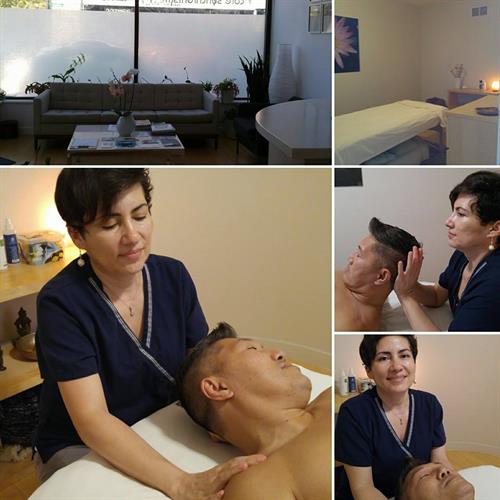Treatment for fibromyalgia requires a team approach including the client, physicians familiar with the condition, physical-, massage- and occupational therapists, and other health care professionals.
The main goal is the relief of pain and other symptoms associated with fibromyalgia and helping the affected individual to cope with the condition.
Treatment may include physical therapy, stress-relief methods, including light massage and manual lymph drainage, and medication for pain and sleep management.
Neuromuscular Therapy is a supportive Therapy for Fibromyalgia. The definition of fibromyalgia is a rheumatic disorder characterized by symptoms: 
chronic achy muscular pain of the low back
neck, shoulders, back of the head, upper chest, and of the thighs, legs, feet, or any other areas of the body that may be involved painful
menstrual cycles, anxiety, palpitations, memory impairment, irritable bladder, skin irritations
dry eyes and mouth, a need for frequent eyeglass prescription changes, dizziness, impaired coordination
sleep disorders, malabsorption, restless leg syndrome, bruxism, and depression
How Manual Lymphatic Drainage can help?
Compared to traditional massage, the pressure applied with manual lymph drainage is much lower in intensity. The goal of these techniques is to manipulate the lymphatic structures located in the subcutaneous tissues. In order to achieve the desired effect, the pressure should be sufficient enough to stretch the subcutaneous tissues against the fascia (a structure separating the skin from the muscle layer) located underneath, but not to manipulate the underlying muscle tissue. The amount of pressure needed in MLD is sometimes described as the pressure applied stroking a newborn’s head.
What about Neuromuscular Therapy?
A supportive therapy with fibromyalgia and CFS, the pain signals are overwhelming the brain (CNS) and the proper signals are not getting through to the brain. If we restore the proper curvature and movement of the neck and alleviate the nerve compression in other areas of the body, more of the good signals can get through to the brain.
With this accomplished on a daily basis, the nervous system’s memories of injuries (facilitated pathways) will become dim memories. Although these memories never go away entirely, the dysfunction will go away if the memories remain dim. People can expect to become pain and dysfunction free, have an increase of energy, and return to a normal lifestyle.

